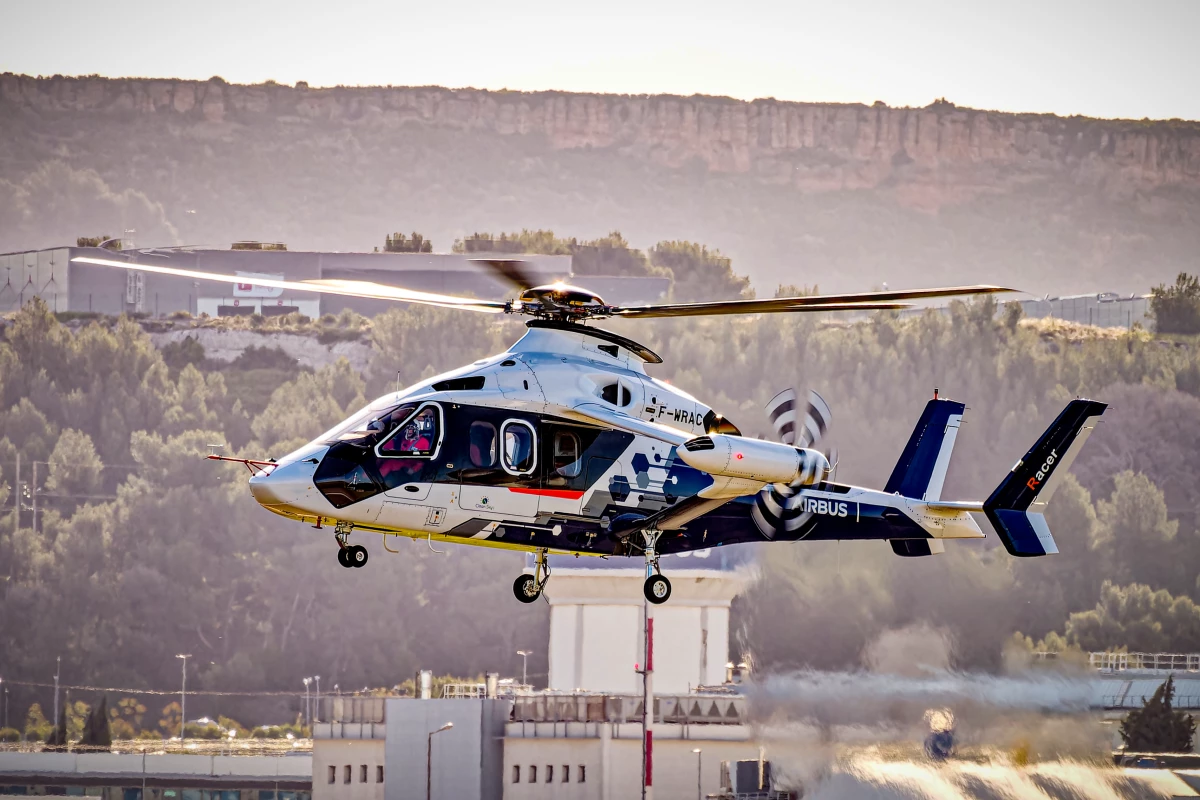Airbus Helicopters has flown its high-speed concept copter, which dashes 50% faster than other commercial copters, for the first time. The 249-mph (216-kt, 400-km/h) Racer demonstrator is not only fast, but consumes up to 25% less fuel.
In 2013, Airbus Helicopters broke the helicopter speed record when its experimental X3 hit 293 mph (255 kt, 472 km/h). Now, with Racer, the company aims at adapting that technology as part of the European Research Clean Sky 2 project for the commercial market while making it more efficient and eco friendly.
Though it may look like a conventional helicopter, the Racer was designed for high-speed flight. The aerodynamics are optimized for high-subsonic speeds and forward propulsion is provided by two pusher engines mounted on box wings to provide lift while flying 50% faster than conventional copters.
The reason for this is that helicopters have a lot of problems at high speed. This is because when a helicopter's rotors are turning, one side is moving forward and the other is moving backwards. At low speeds, this doesn't have much effect, but at high speeds the difference in velocity can screw things up – especially when the tips of the forward moving blades are reaching transonic speeds.
To avoid this, the Racer eases back on the rotors by 15% as it reaches high speed, handing over the heavy lifting to the pusher engines and the box wings. In addition, the two Aneto-1X engines developed by Safran Helicopter Engines are part of a new hybrid-electrical eco-mode system where one of the engines can go offline while cruising. This means lower CO₂ emissions and up to 25% less fuel consumption per mile.
According to Airbus Helicopters, the first flight was a simple 30 minute test to demonstrate the basic behavior of the aircraft. In other words, making sure it can take to the air without anything breaking or falling off. Over the next two years, the test program will be increasingly ambitious as the flight envelope is pushed and the top speed increased.
"With its 90 patents, Racer is the perfect example of the level of innovation that can be achieved when European partners come together," said Bruno Even, CEO of Airbus Helicopters. "This first flight is a proud moment for Airbus Helicopters and for our 40 partners in 13 countries. I look forward to watching this demonstrator pioneer high speed capabilities and develop the eco-mode system that will contribute to reducing fuel consumption."
Source: Airbus Helicopters





